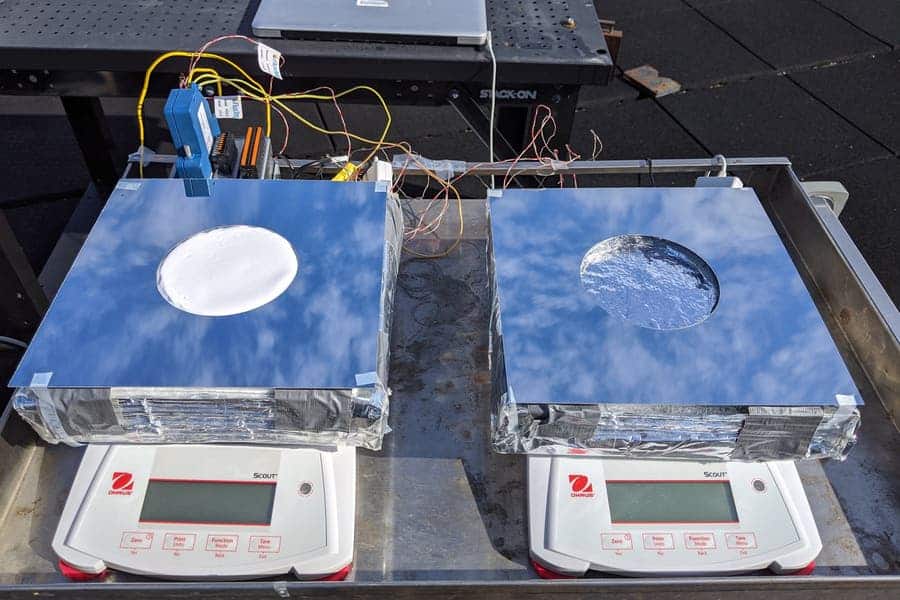
Summers are increasingly becoming unbearable, and even people living in typically cool regions such as the UK are now seriously thinking of installing an AC. This means that we’ll only start spending more energy on air conditioning, draining both our money and our shrinking carbon budget. While sourcing electricity for air conditioning from renewable energy is one way to manage this growing demand, so is pursuing more efficient technology.
Researchers at MIT have really outdone themselves, reporting a three-layer device that only requires water to cool its surroundings by up to 9.3°C (19°F) compared to the ambient temperature. The passive cooling device is meant to preserve food crops and supplement conventional air conditioners in buildings — no electricity is required.
The three-layer design combines radiative cooling, evaporative cooling, and thermal insulation all in the same package. Previously, these passive cooling methods have been employed in isolation, but this is the first time that someone found a way to combine them in the same device, enhancing their output through synergistic effects.
“By combining those features in a synergistic way, we are now able to achieve high cooling performance, even in high-humidity areas where previous technology generally cannot perform well,” said MIT postdoc Zhengmao Lu, lead author of the new study that appeared in the journal Cell Reports Physical Science.
From the outside, the passive cooler looks like a solar panel, and in many ways, it actually is one only instead of electricity, it provides cooling either by chilling water through pipes or directly the ambient air.
The top layer is an aerogel — air enclosed in a sponge-like structure made of polyethylene — that is semi-insulating, allowing only water vapor and infrared radiation (heat) to pass through. Below the aerogel is another layer, this time made of hydrogel — another sponge-like material whose pores are filled with water rather than air. Infrared light from the sun heats the hydrogel, evaporating the water, cooling the device while the vapor passes through the aerogel layer out into the environment.
The bottom layer is a mirror-like reflective surface that reflects any light that manages to pass through the aerogel and hydrogel, beaming it back into space instead so the heat doesn’t get soaked up by the materials, thereby reducing thermal load.
“The novelty here is really just bringing together the radiative cooling feature, the evaporative cooling feature, and also the thermal insulation feature all together in one architecture,” Lu explains.
Lu and colleagues tested a prototype just 4-inch across on the rooftop of one of the MIT buildings, showing it could achieve 9.3°C (18.7°F) of cooling even in suboptimal weather conditions. That’s enough to dramatically help reduce food losses owed to spoilage in many parts of the world that lack refrigeration.
The device could, for instance, be installed on the roof of a food storage container. Alternatively, it could be used in places with existing air conditioning to significantly reduce the load on these systems by sending cool water to the hottest parts of the system. “By lowering the condenser temperature, you can effectively increase the air conditioner efficiency, so that way you can potentially save energy,” Lu says.
The only maintenance required is regularly adding the water needed for evaporation. That’s not much of a hassle since even in the hottest, driest areas, operators are expected to change the water every four days and only once a month in wetter areas.
The prototype demonstrated by the researchers can be scaled industrially. However, while most of the materials are readily available, the aerogel is rather expensive at this point and its design requires some design tweaks to make it feasible for mass production. Now, if they can figure out how to solve the mass manufacturing of their aerogel, this passive tech could prove to be big.






